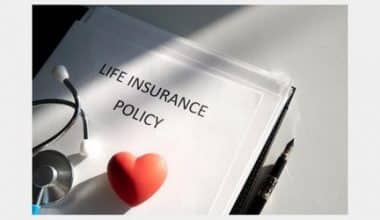If you’re navigating the complexities of car insurance, understanding UIM (Underinsured Motorist) coverage is paramount. This type of insurance, often referred to as UIM coverage, safeguards you in situations involving uninsured motorists, their property damage, and the potential costs associated with a UIM claim. Familiarizing yourself with UIM insurance can be an essential shield against unforeseen expenses arising from accidents involving uninsured drivers and their property damage, potentially impacting UIM cost.
What is the Uim?
Underinsured Motorist (UIM) coverage in car insurance aims to protect individuals when an at-fault driver lacks sufficient insurance to cover damages. This coverage acts as a safety net, intervening when the other driver’s liability coverage proves inadequate for injuries or property damage resulting from an accident.
This coverage helps bridge the gap between the at-fault driver’s liability limits and the actual expenses incurred, potentially covering medical bills, lost wages, and property damage beyond what the other driver’s policy can pay.
When a situation arises where the responsible party is underinsured or uninsured, UIM coverage becomes vital. It ensures policyholders have additional protection, compensating for the inadequacy of the other driver’s insurance and offering necessary financial support to cover the costs associated with an accident. When it comes to protecting oneself from unforeseen financial difficulties resulting from accidents caused by drivers who lack insurance or have inadequate coverage, UIM coverage is very important.
UIM Coverage
UIM coverage, short for Underinsured Motorist coverage, is an integral component of an auto insurance policy. This insurance provision safeguards policyholders when involved in accidents with drivers who possess insufficient insurance. It acts as a supplementary layer of protection, offering coverage for injuries or property damages not adequately compensated by the at-fault party’s liability insurance.
Should an accident occur with an underinsured driver, UIM coverage steps in to bridge the financial gap, providing compensation beyond the limits of the other driver’s policy. This coverage is especially valuable in situations where the damages exceed the liability coverage held by the responsible driver, ensuring policyholders receive adequate compensation for medical expenses, lost income, and property damage.UIM coverage is an important safety net, providing peace of mind and financial protection in the event of an accident involving an underinsured motorist.
Uim Claim
A UIM claim refers to the process of seeking compensation under the Underinsured Motorist coverage within an auto insurance policy. When involved in an accident where the at-fault party has insufficient insurance to cover the incurred damages, the policyholder may file a UIM claim. This claim aims to make up the difference between the losses sustained and the liability coverage limit of the at-fault driver.
Initiating a UIM claim involves informing the insurance provider about the accident, providing necessary documentation, and proving that the at-fault driver’s coverage is inadequate. This process involves presenting evidence of the damages, such as medical bills, repair estimates, and other relevant records, to support the claim for additional compensation under the UIM coverage. Successfully processed UIM claims ensure that the policyholder receives the necessary compensation to cover the remaining costs not handled by the at-fault driver’s limited insurance, thereby helping mitigate the financial impact of the accident.
Uninsured Motorist Property Damage
Uninsured Motorist Property Damage (UMPD) is an aspect of auto insurance that covers property damage caused by an uninsured motorist. When an uninsured driver is at fault for an accident resulting in property damage to your vehicle, UMPD coverage becomes crucial. This type of insurance serves as a safety net, compensating for repair or replacement costs if the at-fault driver lacks liability coverage.
UMPD is especially valuable in situations where the responsible party is uninsured and unable to cover the costs of repairing or replacing your damaged property. The coverage ensures that your vehicle’s damages, incurred due to an accident caused by an uninsured driver, are addressed, helping to ease the financial burden of repairing or replacing the property affected by the uninsured motorist’s negligence. It’s an essential component of insurance for those seeking additional protection against potential property damage when involved in accidents with uninsured drivers.
Uim Cost
The cost of Underinsured Motorist (UIM) coverage varies depending on factors like your location, coverage limits, and driving history. Premiums are influenced by the level of UIM coverage you choose and your insurance provider. UIM coverage is an additional expense on your auto insurance policy, but the cost is typically reasonable compared to the potential financial consequences of being involved in an accident with an underinsured driver. To determine the UIM cost, you can request quotes from different insurance companies, considering your specific circumstances. It’s crucial to strike a balance between the coverage limits and your budget to ensure you have adequate protection against underinsured motorists. Reviewing policy terms, deductibles, and any additional features is essential to understanding the full cost and benefits of UIM coverage for your auto insurance.
What Are the Benefits of Uim?
The advantages of UIM (Underinsured Motorist) coverage are numerous, with the primary benefit of providing a safety net in circumstances where the at-fault motorist lacks adequate insurance. This coverage fills the void left by the damages and the limits of the other driver’s liability policy. When the at-fault driver’s insurance does not fully cover the expenses incurred as a result of an accident, UIM coverage assures policyholders receive compensation for medical bills, lost earnings, and property damage not covered by the other driver’s policy.
UIM coverage provides peace of mind by providing an extra layer of protection against unforeseen financial difficulties caused by accidents involving underinsured drivers. It provides financial assistance beyond the limitations of the at-fault driver’s insurance, assisting in the coverage of accident-related expenditures. Policyholders who have UIM coverage can rest certain that they are better prepared for circumstances involving drivers who have insufficient or no insurance, ensuring they are sufficiently protected in the event of an unexpected accident.
What Is Uim Insurance in SC?
In South Carolina, UIM (Underinsured Motorist) insurance serves as a safeguard for drivers. It provides coverage if you are involved in an accident caused by a driver who does not have enough insurance. SC UIM insurance protects policyholders when the at-fault driver’s liability coverage is insufficient to cover the damages.
UIM insurance in South Carolina acts as a safety net, ensuring that individuals are not left with a financial burden if they are engaged in incidents with uninsured drivers. It fills the gap between the at-fault driver’s coverage limitations and real expenses by providing additional compensation for injuries or property damage above and beyond what the other driver’s insurance can pay. This coverage is especially essential in South Carolina, as it provides a layer of financial protection for policyholders in circumstances involving drivers who have insufficient insurance coverage.
Does Uim Coverage Stack?
In some regions or insurance policies, UIM coverage can stack, enabling policyholders to combine coverage from multiple vehicles or policies. This stacking allows individuals to aggregate coverage from different vehicles or insurance plans, increasing the total amount available for a claim. For instance, if a policyholder has UIM coverage on multiple vehicles or additional UIM coverage through different policies, they might be eligible to stack this coverage, potentially increasing the compensation available in the event of an accident involving an underinsured motorist.
However, stacking UIM coverage availability varies based on state laws and the insurance policy terms. Not all regions or insurance providers permit stacking, and it’s essential to review the policy details or consult with the insurance company to understand whether stacking UIM coverage is an option. While stacking offers the potential for higher compensation, the specifics regarding its availability and the extent of coverage will depend on the particular insurance policy and the regulations in the respective area.
How Does Uim Work in Florida?
In Florida, UIM (Underinsured Motorist) coverage functions as a safeguard for policyholders involved in accidents with drivers possessing insufficient insurance. This coverage steps in when the at-fault driver’s liability coverage is insufficient to cover the damages incurred by the policyholder.
UIM coverage in Florida enables individuals to seek compensation from their own insurance provider if the at-fault driver lacks enough coverage to pay for the damages. It ensures that policyholders receive additional compensation for injuries or property damage beyond the limits of the other driver’s policy. Florida’s UIM coverage operates as an essential safety net, offering protection in cases where the at-fault driver’s insurance cannot adequately cover the incurred expenses and providing necessary financial support to policyholders.
What Is Uim Authentication?
UIM authentication is a process within networking security that verifies user identities and allows access to specific systems or resources. This verification involves confirming the authenticity of a user’s identity, ensuring only authorized individuals gain access to the intended services or information. The UIM authentication process typically involves various methods, such as passwords, biometrics, security tokens, or multifactor authentication. These measures work collectively to verify and validate the identity of the user seeking access to a network or system.
Moreover, UIM authentication ensures a secure environment by preventing unauthorized access and protecting sensitive data or resources. This process involves continuous advancements to fortify security measures, adapt to evolving threats, and ensure authentication procedures to safeguard against potential breaches or unauthorized access. Ultimately, UIM authentication plays a pivotal role in maintaining the integrity and security of network systems and safeguarding valuable information and resources from unauthorized users.
How Long Do You Have to File a UIM Claim in Texas?
In Texas, the statute of limitations to file a UIM (Underinsured Motorist) claim typically aligns with the general personal injury statute. The state generally allows up to two years from the date of the accident to file a UIM claim. This timeframe allows individuals involved in accidents with underinsured motorists sufficient time to initiate the claims process.
Adhering to this time limit is crucial, as exceeding the specified period might result in the forfeiture of the right to seek compensation through a UIM claim. Acting within the statute of limitations ensures that individuals have a reasonable duration to assess damages, gather necessary evidence, and file a UIM claim in Texas, thereby safeguarding their ability to seek the compensation they are entitled to.
What Is the Difference Between Stacked and Unstacked Uim?
Stacked and unstacked UIM (Underinsured Motorist) coverage differs in how policyholders can combine or use coverage across multiple vehicles. Stacked UIM involves combining the coverage limits of more than one vehicle on the same policy. This method aggregates the limits of different vehicles, increasing the total coverage available for a claim.
On the other hand, unstacked UIM operates without the option to combine or stack coverage from multiple vehicles. In this scenario, the coverage limit applies separately to each individual vehicle within the policy. Unstacked UIM generally offers lower coverage limits compared to stacked UIM but applies the coverage per vehicle, not combined across vehicles. The distinction between these forms of coverage lies in the ability to accumulate coverage limits from different vehicles under a single policy (stacked) or to have separate, distinct coverage limits for each vehicle (unstacked).
Does Texas Require Uim?
Texas law does not mandate drivers to carry UIM (Underinsured Motorist) coverage in their auto insurance policy. The state law doesn’t require drivers to have UIM coverage as a compulsory component of their insurance policy. However, insurance companies in Texas must offer UIM coverage to policyholders. They must provide this coverage as an option, allowing individuals to purchase UIM insurance, although it’s not mandatory by law.
While UIM coverage isn’t obligatory in Texas, having this additional protection is highly recommended. It acts as a safety net, particularly when involved in accidents with underinsured motorists, potentially compensating for damages not covered by the other driver’s policy. Despite the lack of a legal requirement, obtaining UIM coverage is beneficial for Texans, offering an extra layer of financial protection in situations involving drivers with insufficient insurance coverage.
FAQs
In Texas, how long do you have to file a UIM claim?
Contract breach cases are subject to a four-year statute of limitations. This would also include claims for uninsured or underinsured motorist coverage (UM/UIM).
What is the first step in filing an insurance claim?
Please provide your name, address, and policy number, as well as the date and time of your loss. If you are unable to stay in your house, make sure your insurance agent knows where you can be reached. Follow up with the phone contact with a letter outlining the issue. Maintain a copy of the letter.
Is UIM mandatory in California?
Underinsured and uninsured motorist coverage is not required by law in California, but it may be prudent to have it regardless. California is among the top ten states with the greatest rate of uninsured drivers.
- INSURANCE ADJUSTER: Definition, Duties & How to Become One
- WHAT IS A CLAIM IN INSURANCE? How It Works
- CAR INSURANCE COLORADO: Coverage, Cost & Best Options
- PENNSYLVANIA CAR INSURANCE: Coverage, Cost & More






